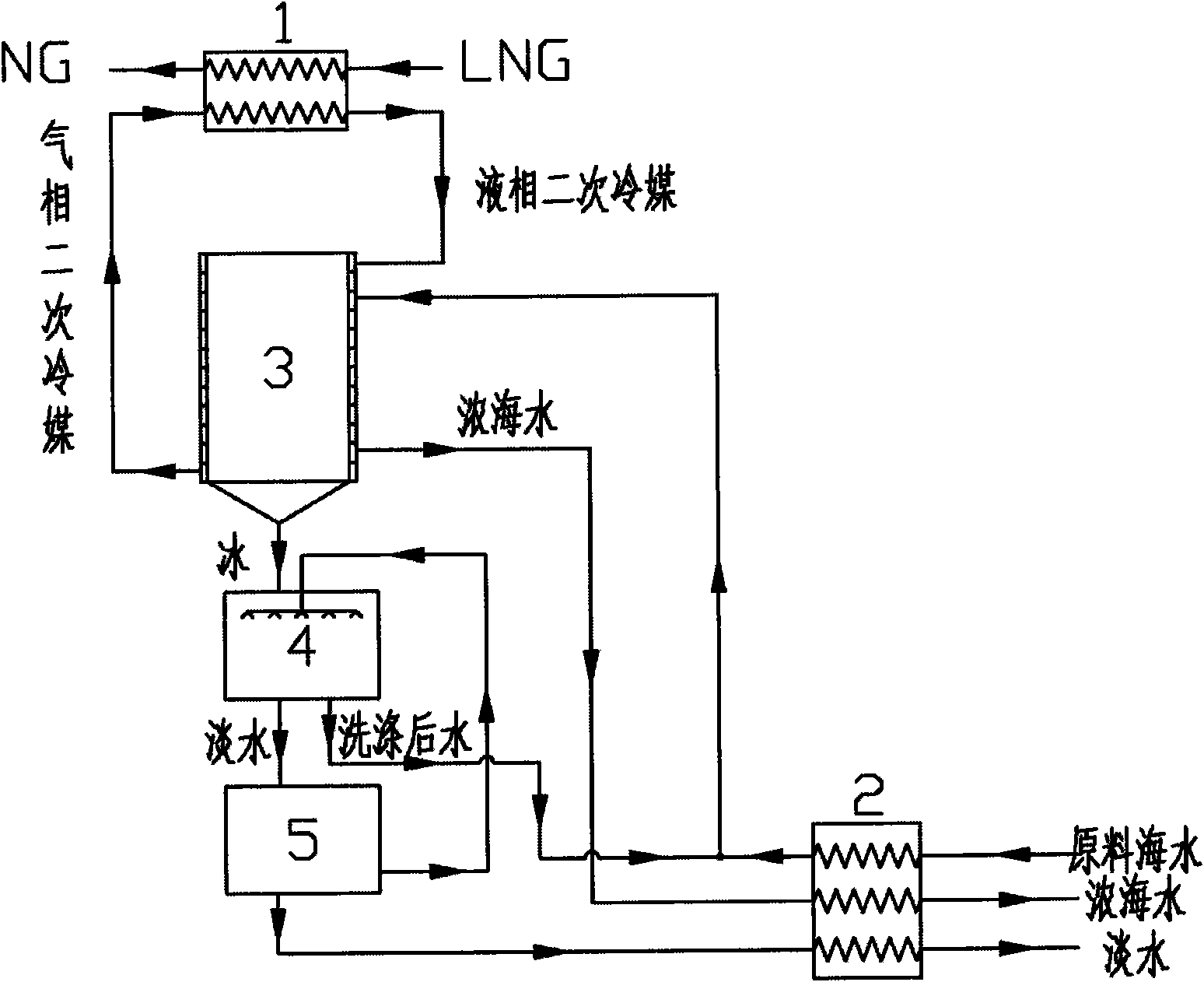Desalting method with phase change for indirectly freeze seawater by using of liquefied natural gas refrigeration capacity
A liquefied natural gas, indirect technology, applied in the field of refrigeration and low temperature, can solve the problem of high energy consumption and achieve the effect of reducing energy consumption
- Summary
- Abstract
- Description
- Claims
- Application Information
AI Technical Summary
Problems solved by technology
Method used
Image
Examples
Embodiment Construction
[0015] The specific implementation of the present invention using R410A as the secondary refrigerant will be further described below in conjunction with the accompanying drawings.
[0016] like figure 1 Shown, the inventive method comprises the following steps:
[0017] 1. The liquefied natural gas exchanges heat with the gas-phase secondary refrigerant R410A in the first heat exchanger 1, so that the temperature of the secondary refrigerant decreases and undergoes a gas-liquid phase transition to condense. Among them, the secondary refrigerant R410A is in the first heat exchanger 1 The inlet state parameters are -25°C, 0.33MPa, the outlet state parameters are -32°C, 0.28MPa, and the first heat exchanger 1 adopts a plate-fin low-temperature heat exchanger;
[0018] 2. The secondary refrigerant R410A after cooling and liquefaction enters the evaporation coil outside the crystallizer 3, and the raw seawater enters the inner side of the crystallizer 3 after being cooled by the s...
PUM
 Login to View More
Login to View More Abstract
Description
Claims
Application Information
 Login to View More
Login to View More - R&D
- Intellectual Property
- Life Sciences
- Materials
- Tech Scout
- Unparalleled Data Quality
- Higher Quality Content
- 60% Fewer Hallucinations
Browse by: Latest US Patents, China's latest patents, Technical Efficacy Thesaurus, Application Domain, Technology Topic, Popular Technical Reports.
© 2025 PatSnap. All rights reserved.Legal|Privacy policy|Modern Slavery Act Transparency Statement|Sitemap|About US| Contact US: help@patsnap.com

